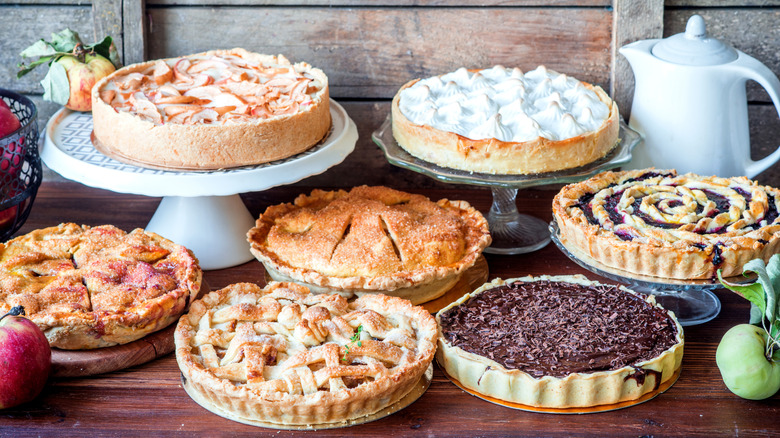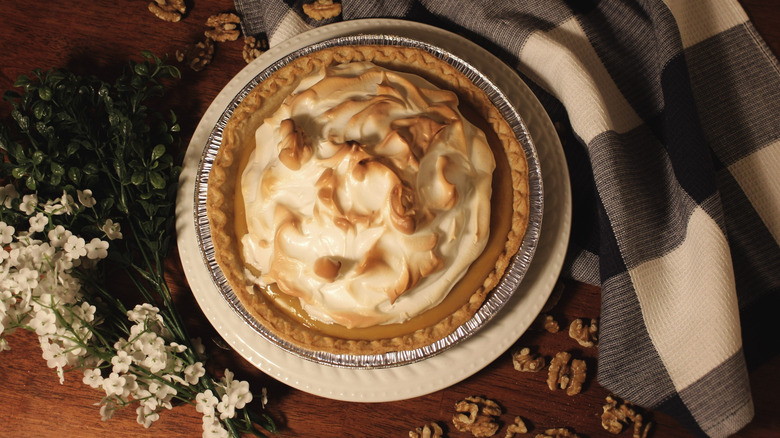The Sweet Vintage Pie That Was Created By Accident
Some desserts are timeless — dishes like chocolate cake, Oreos and milk, or apple pie with a dollop of vanilla bean ice cream. Others come and go as tastes change: Vintage Jell-O cookies and oyster ice cream are just two examples of desserts that have faded from the public frame of reference. One dish that lies somewhere in between is butterscotch pie, a classic confection that came about almost entirely by accident.
The story of the butterscotch pie traces its roots back to an Indiana kitchen sometime between 1901 and 1904. The restaurant was the Wheeler Creamerie Exchange, and the woman at the heart of the accident-turned-miraculous discovery was Sarah Wheeler, who ran the bakery with her sons. One day, the story goes, she was working on a cream pie — another Indiana dessert with a long history — when a customer distracted her and the pie burned. She left it out for her sons to eat, and they informed her that it was delicious and, strangely, tasted exactly like butterscotch candy.
Thus, a legend was born. Wheeler published the recipe in a cookbook soon after, and by 1920, it was a nationwide phenomenon. Her two sons opened Wheelers Lunch that year and quickly expanded to eight locations of 24-hour diners, serving many classic diner foods, which, of course, included their mother's pie. The Wheeler brand was so popular they were even tapped to man the concessions at the Indianapolis Motor Speedway, home of the Indy 500.
How to make butterscotch pie
An authentic butterscotch pie consists of three parts: the crust, the custard, and the meringue. To whip up a custard that would make Sarah Wheeler proud, caramelize a combination of sugar, water, and salt, then mix it into heated milk and combine it with a mixture of milk, egg yolks, and flour over hot water until it thickens. Finally, incorporate butter and vanilla and allow it to cool. Once you've added that mixture to the pie crust, you can make your meringue, spread it across the pie in an even layer, and bake at 400 degrees Fahrenheit for five to eight minutes.
If you want to introduce some variations, a classic graham cracker crust (particularly when made with browned butter) can act as a delightful flavor complement to the butterscotch while giving a bit of extra crunch that the soft pie filling craves. You can also crumble some cookies on top of the meringue for a similar effect.


